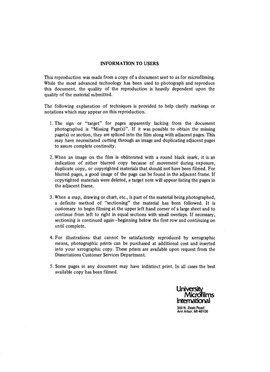| dc.contributor.author | Morrison, Richard Pearce, | en_US |
| dc.date.accessioned | 2013-08-16T12:28:47Z | |
| dc.date.available | 2013-08-16T12:28:47Z | |
| dc.date.issued | 1982 | en_US |
| dc.identifier.uri | https://hdl.handle.net/11244/5057 | |
| dc.description.abstract | Mitogenic responses to PHA Con A and LPS were found to be significantly altered in mice infected sc with B. dermatitidis. One week after sc infection the blastogenic response of spleen cells to all three mitogens was depressed. Responsiveness to PHA returned to normal by the second week, whereas responsiveness to Con A and LPS remained depressed for 3 and 4 weeks respectively. The return of mitogenic responses to normal levels by 5 weeks coincided with the recovery from sc infection. | en_US |
| dc.description.abstract | These results demonstrate suppressed blastogenic responses to mitogens during early stages of the immune response to B. dermatitidis. In vitro responsiveness of lymphocytes from sensitized animals to B-ASWS was also shown. The population of cells responsible for the proliferative response to B-ASWS appears to be T lymphocytes. | en_US |
| dc.description.abstract | Mice infected iv with a lethal dose of B. dermatitidis demonstrated altered mitogenic responsiveness, also. Significantly depressed blastogenesis upon stimulation with PHA or Con A was observed by 4 days after infection. Depressed responsiveness to LPS occurred 8 days after infection. Spleen cells from iv infected mice responded well to B-ASWS at 8 and 12 days after infection, even though the mice would have died a few days later. In this case blastogenesis to B-ASWS does not indicate protection. The cell population responsible for the proliferative response to B-ASWS was identified as a T cell by the use of specific anti-sera and nylon wool separation. | en_US |
| dc.description.abstract | Blastogenic responses of spleen cells from normal mice, and mice either immunized or infected with B. dermatitidis were studied. Mice were sensitized by ip inoculation of formalin killed B. dermatitidis, sc inoculation of merthiolate killed B. dermatitidis or sc inoculation of viable B. dermatitidis yeast cells. The latter group demonstrated the most vigorous protective immune response to an iv challenge of viable B. dermatitidis yeast cells. All groups developed in vitro responsiveness to B-ASWS two to three weeks after sensitization. However, the blastogenic response to B-ASWS waned by 6 weeks in those animals immunized with killed B. dermatitidis, but remained high in mice that were infected sc with live yeast. | en_US |
| dc.format.extent | ix, 76 leaves : | en_US |
| dc.subject | Biology, Microbiology. | en_US |
| dc.title | Lymphocyte blastogenic responses in experimental blastomycosis. | en_US |
| dc.type | Thesis | en_US |
| dc.thesis.degree | Ph.D. | en_US |
| dc.thesis.degreeDiscipline | Department of Microbiology and Plant Biology | en_US |
| dc.note | Source: Dissertation Abstracts International, Volume: 43-09, Section: B, page: 2809. | en_US |
| ou.identifier | (UMI)AAI8302462 | en_US |
| ou.group | College of Arts and Sciences::Department of Microbiology and Plant Biology | |
